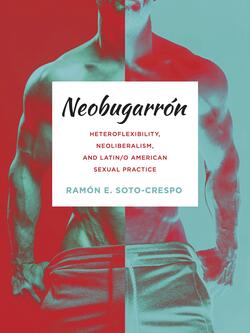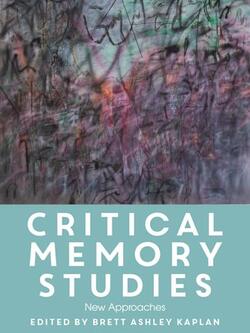The Alleys: Just Dropped In (to See What Condition my Condition Was In) is a series of letters written between the collaborative duo Sandra Ruiz & Hypatia Vourloumis, co-authors of Formless Formation: Vignettes for the End of This World. Turning to the epistolary as a practice and mechanism for uncovering how thought, experience, and knowledge processes are inherently dialogic, Ruiz & Vourloumis place pressure on the regulatory infrastructures and conditions of individuation and exchange. Decentralizing and redistributing sites of sharing and connection, the book asks the reader/listener to travel down the narrowest of gatherings and passages known as the alleys—hidden planetary meeting spots and counter paths for correspondence and movement, both ephemeral and material, marginal and vital, everywhere and nowhere.

How should we understand the bugarrón, a man who has sex with other men while regarding himself as heterosexual? Reaching beyond queer and gay studies, Ramón E. Soto-Crespo’s research suggests that this paradoxical figure mutated into what he calls the “neobugarrón,” a neoliberal market-oriented actor who used the traditional sexual practice as an optimizing strategy for manipulating the forces of globalization during the 1990s.
In Neobugarrón: Heteroflexibility, Neoliberalism, and Latin/o American Sexual Practice, Soto-Crespo chronicles the cultural modifications of bugarrón, a distinct male-male sexual practice in Latin/o America and the Caribbean, during the twentieth and twenty-first centuries. Working with and against Foucault and Kinsey to examine diverse works from anthropology, literature, cinema, and social media, he investigates a wide array of bugarrón sources, ranging from previously underexamined multimedia to ethnographies, fiction, films, and beyond. These works constitute a neobugarrón archive and attest to a sexual practice currently metamorphosing on the cusp of extinction. Soto-Crespo’s analysis challenges conventional understandings of “heteroflexible” sex between men and reveals a hitherto unnoticed transformation in neoliberal ecologies of bugarrón sexual practice.

From the Black Power movement and state surveillance to Silicon Valley and gentrification, Medina by the Bay examines how multiracial Muslim communities in the San Francisco Bay Area survive and flourish within and against racial capitalist, carceral, and imperial logics. Weaving expansive histories, peoples, and geographies together in an ethnographic screenplay of cinematic scenes, Maryam Kashani demonstrates how sociopolitical forces and geopolitical agendas shape Muslim ways of knowing and being. Throughout, Kashani argues that contemporary Islam emerges from the specificities of the Bay Area, from its landscapes and infrastructures to its Muslim liberal arts college, mosques, and prison courtyards. Theorizing the Medina by the Bay as a microcosm of socioeconomic, demographic, and political transformations in the twentieth- and twenty-first centuries, Kashani resituates Islam as liberatory and abolitionist theory, theology, and praxis for all those engaged in struggle.

Through the mid-nineteenth century, the US whaling industry helped drive industrialization and urbanization, providing whale oil to lubricate and illuminate the country. The Pennsylvania petroleum boom of the 1860s brought cheap and plentiful petroleum into the market, decimating whale oil's popularity. Here, from our modern age of fossil fuels, Jamie L. Jones uses literary and cultural history to show how the whaling industry held firm in US popular culture even as it slid into obsolescence. Jones shows just how instrumental whaling was to the very idea of "energy" in American culture and how it came to mean a fusion of labor, production, and the circulation of power. She argues that dying industries exert real force on environmental perceptions and cultural imaginations.
Analyzing a vast archive that includes novels, periodicals, artifacts from whaling ships, tourist attractions, and even whale carcasses, Jones explores the histories of race, labor, and energy consumption in the nineteenth-century United States through the lens of the whaling industry's legacy. In terms of how they view power, Americans are, she argues, still living in the shadow of the whale.

Bringing together a diverse array of new and established scholars and creative writers in the rapidly expanding field of memory studies, this collection creatively delves into the multiple aspects of this wide-ranging field. Contributors explore race-ing memory; environmental studies and memory; digital memory; monuments, memorials, and museums; and memory and trauma.
Organised around 7 sections, this book examines memory in a global context, from Kashmir and Chile to the US and UK. Featuring contributions on topics such as the Black Lives Matter movement; the AIDS crisis; and memory and the anthropocene, this book traces and consolidates the field while analysing and charting some of the most current and cutting-edge work, as well as new directions that could be taken.
